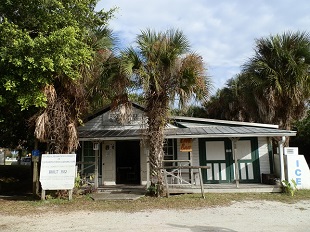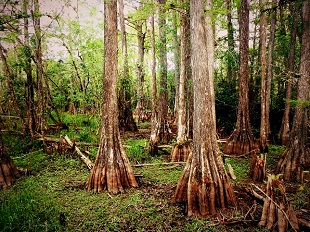FLORIDA, U.S.A. The Gulf of Mexico is the calmer side of Florida, incomparable to the ritzy showcasing of Miami and South Beach, and certainly more serious than Orlando and Walt Disney World. This coast attracts a different type of visitor: Snow Birds. These are residents of the Northern United States, and increasingly Canadian citizens, who truly migrate South during the winter months. No longer willing to bear the cold and snow, many flock to communities for residents aged 65 and-older and enjoy retirement “The Sunshine State.”
The taste of the Florida Gulf Coast is peculiar. It’s not far enough North in the Panhandle to receive heavy influences from Creole culture; it’s not far enough south to take part in the South Beach craze. Cuisine based in the ocean, with fresh seafood and salty flavors, yet there is a strong dose of New England seafood culture. Restaurants feature thick scallops the size of your fist, and shrimp that almost burst from their shells. The grouper fish season is narrow, but it’s worth tasting this goliath bottom-feeder whose meat is firm, yet flakes away. On the same menu, heavy clam chowders and lobster macaroni and cheese reinvent comforts of the Northeast Atlantic coast.

The El Jobean Depot, formerly a post office built in 1922, now serves as a meeting space, cafe and museum for the area’s history.
From January to March, when the sun goes missing in the north and people once feared scurvy, Florida bursts with citrus fruit. Freshly harvested grapefruits beam a radiant shade of pucker-inducing red; Valencia oranges peel as juicy, mildly sweet slices; honeybells, a deep orange-colored fruit that is the cross-bred citrus of orange and tangerines; seemingly endless pints of fresh, greet firm strawberries; and the list goes on, because fresh produce is never out of reach. These bright flavors perk up standard fare: avocadoes meet papaya on an arugula salad, mango-raspberry chutneys slathered onto hunks of fish, and bread butter swirled with orange marmalade.
Who are the born and bred Floridians? I wonder, sometimes, if I know Florida beyond the transplanted culture of relaxing days and early dinners. When I worked at a café in my small hometown of rural western New York, one of my co-workers actually grew up, worked, then moved from the same area where my parents just relocated as Snow Birds! If human migratory patterns have shifted, it’s because we search for financial security, rather than roving herds of animals. The wealth of the North bores heavily on poverty in Florida. Property taxes are kept low, while hiked-up commodity and excise taxes attempt to fill this gap. The precarious real estate market offers beach-side condominiums, pastel-colored villas, Spanish mission-style homes with terra cotta barrel roofs. Yet in the next town, it’s possible to find decrepit buildings, concrete driveways ruptured by weeds, skeletons of unfinished houses, and abandoned properties where the housing market bubble burst too soon. Restaurants starting at $50 an entrée catering to the readapted Snow Birds sit down the road from struggling strip malls and $3 tacos.
Florida is a narrow state and less than two hours from the coast, Everglades National Park encompasses dozens of interdependent ecosystems across the southern peninsula. The first Paleo-Indians on the hunt for mega-creatures lived here as much as fifteen thousand years ago, though it wasn’t until the 1970s that UNESCO designated this bio diverse park as one of the three most important wetlands in the world. Noisy highways and cleaned-up condos dissipate into ancient marshes of swamp grass, cypress and mangroves as far as the eye can see. Creaky wooden restaurants unabashedly offer bayou cuisine, where everything’s fried: frog legs, crocodile, even rodents. This region of Florida in the Everglades may not be as accessible, but I have the sense that residents are here for the long haul. Although I enjoy my afternoon happy hours on the beach, it’s reassuring to know that people will make the best of Florida after winter has passed, and the Snow Birds migrate back North.

Cypress trees in Everglades National Park of southern Florida are notable for their exposed roots and longevity.
***
Some tips: The Florida Gulf Coast is accessible by car via Interstate 75 (I-75) all the way south until Naples, then curving east towards Ft. Lauderdale. Flights are also available daily int Sarasota (SRW) or Fort Meyers (RSW) airports. The best way to travel around is with a car because there are four major highways, but make your way to one of the 600 miles of beach, and you won’t want to leave! On the Gulf of Mexico, Boca Grande and Siesta Key are some of the most beautiful beaches in the world. Take the vacation with a group because condos, apartments, and houses can be rented starting at $1,500 a week, although prices are more expensive during high season between October and April (when the Snow Birds arrive). Golf, cycling, kayaking, and fishing are also popular activities.
More information at the Gulf Coast of Florida tourism site. For information on affordable accommodation see Tripadvisor.

